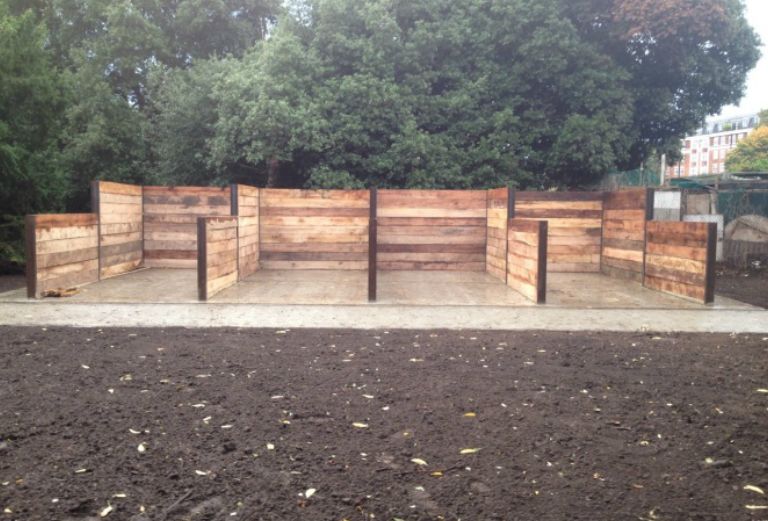
In autumn 2014 WREF, The Western Riverside Environmental Fund, fully funded a £13,500 project to clear and then build a composting unit for the Fulham Palace Trust.
A composting system is integral to managing a garden successfully. Now that the compost unit is complete, green waste at Fulham Palace can be processed efficiently and produce good garden compost which is essential for high quality plant growth. It is has also provided an invaluable system to manage green waste in a sustainable and effective way. The Fulham Palace Trust is very grateful for to WREF, and the compost system will be support the progression and development of the gardens at Fulham Palace for many years to come.
Composting is the crux of the horticultural cycle and if not in place, the natural sequence of horticultural events are interrupted and inefficient. For example; the vegetable beds in the walled garden at Fulham Palace are planted and sown from spring onwards, the crops grow with their roots taking up nutrients from the soil, crops are harvested and in autumn and winter the vegetable beds are cleared and old plant material is put on the compost heap. Come spring compost made from the plants is spread back into the beds, this replenishes the soil and the beds are once more ready for sowings and planting. This is the system we want to work to. Not only does composting provide gardens with essential organic matter to improve soils it also provides a free, environmentally friendly recycling system for the spent plant material. It’s a win win situation.
Since 2011 when the Fulham Palace Trust was formed, the garden development plans were made and composting shot up to being a high priority. A good composting system means a good running garden. Over the past 3 years new features have been introduced and we now have a vegetable garden, perennial flowers beds and mixed borders. These are all horticultural areas that create a lot of green waste and requires composted organic matter for annual mulching or soil improving.
In the past leaves and grass clippings were heaped up and subsequently made a beautiful leaf mould compost but this was underutilised in the gardens. Hedge clippings and other more woody material was bagged up and sent for landfill. This needed to be changed.
Over past two years more herbaceous material has been deposited for composting, but the heap was still one huge mound of rotting material that was spreading out all the time. The heap had a huge surface area and so the essential composting heat to kill off weed seeds and pernicious plant material was being lost. Plus there was only one heap and so fresh material was continually being added and the heap was not allowed to mature properly.
The new WREF compost unit consists of four equally sized bays on a concrete pad. The bays are 2.6m wide by 5.2m long and 1.8m high at the back and so deep bays that will allow the compost to be piled up with minimal surface area keeping in composting heat and bringing order to the compost area. The compost unit concrete base is slightly sloped and a drain collects the leachate from the rotting material into a small tank on one side. Being so close to the Thames and within 25m of bore holes in the allotments next door we need to be managing any by-products that the compost creates to avoid any potential ground contamination.
The Fulham Palace Composting System
Compost Unit – 4 Labelled bays
- Composting bay – material that doesn’t need shredding. e.g. no woody material, herbaceous material less than approx. 1.5 cm wide stems.
- Shredding bay – material to be shredded into composting bay e.g. all woody material and herbaceous greater than approx. 1.5 cm wide stems.
- Spare bay – will move old compost heap into here.
- Spare bay – leave empty to have as second composting bay when first one is full.